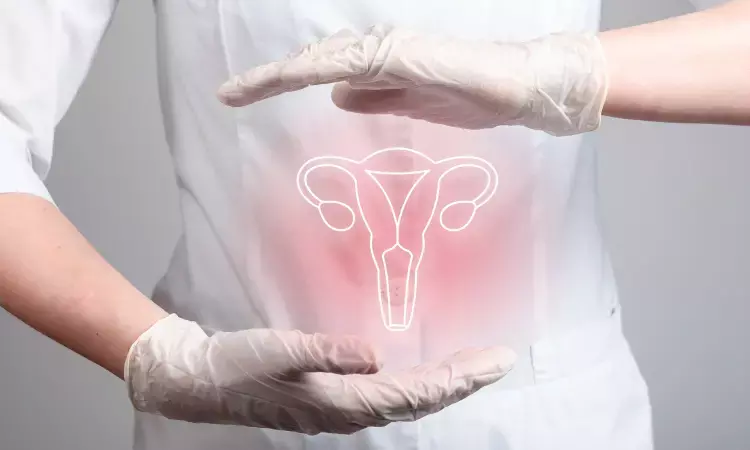- Home
- Medical news & Guidelines
- Anesthesiology
- Cardiology and CTVS
- Critical Care
- Dentistry
- Dermatology
- Diabetes and Endocrinology
- ENT
- Gastroenterology
- Medicine
- Nephrology
- Neurology
- Obstretics-Gynaecology
- Oncology
- Ophthalmology
- Orthopaedics
- Pediatrics-Neonatology
- Psychiatry
- Pulmonology
- Radiology
- Surgery
- Urology
- Laboratory Medicine
- Diet
- Nursing
- Paramedical
- Physiotherapy
- Health news
- Fact Check
- Bone Health Fact Check
- Brain Health Fact Check
- Cancer Related Fact Check
- Child Care Fact Check
- Dental and oral health fact check
- Diabetes and metabolic health fact check
- Diet and Nutrition Fact Check
- Eye and ENT Care Fact Check
- Fitness fact check
- Gut health fact check
- Heart health fact check
- Kidney health fact check
- Medical education fact check
- Men's health fact check
- Respiratory fact check
- Skin and hair care fact check
- Vaccine and Immunization fact check
- Women's health fact check
- AYUSH
- State News
- Andaman and Nicobar Islands
- Andhra Pradesh
- Arunachal Pradesh
- Assam
- Bihar
- Chandigarh
- Chattisgarh
- Dadra and Nagar Haveli
- Daman and Diu
- Delhi
- Goa
- Gujarat
- Haryana
- Himachal Pradesh
- Jammu & Kashmir
- Jharkhand
- Karnataka
- Kerala
- Ladakh
- Lakshadweep
- Madhya Pradesh
- Maharashtra
- Manipur
- Meghalaya
- Mizoram
- Nagaland
- Odisha
- Puducherry
- Punjab
- Rajasthan
- Sikkim
- Tamil Nadu
- Telangana
- Tripura
- Uttar Pradesh
- Uttrakhand
- West Bengal
- Medical Education
- Industry
Oral lasofoxifene effective for vaginal atrophy in postmenopausal women, finds study

A recent study published in the journal of Menopause revealed promising results for the treatment of moderate to severe vaginal atrophy in postmenopausal women using oral lasofoxifene. This research was conducted by Risa Kagan and team which included two phase 3, randomized, controlled trials that demonstrated the efficacy of lasofoxifene in reducing the symptoms associated with genitourinary syndrome of menopause (GSM).
The studies assessed whether lasofoxifene could improve the most bothersome symptoms (MBS) of GSM along with evaluating changes in vaginal pH and the percentages of vaginal parabasal and superficial cells. A total of 889 postmenopausal women with an average age of approximately 60 years participated in the trials. They were randomly assigned to receive either a daily dose of 0.25 mg or 0.5 mg of lasofoxifene or a placebo, over a 12-week period.
The participants who were receiving lasofoxifene showed significant improvements in all coprimary endpoints when compared to the placebo group. Also, the MBS decreased markedly with lasofoxifene 0.25 mg/d and 0.5 mg/d (least square mean difference from placebo: −0.4 and −0.5, respectively). Vaginal pH levels also dropped (−0.65, −0.58 for the lower dose and −0.57, −0.67 for the higher dose) which indicated a healthier vaginal environment. There was a notable increase in superficial cells and a reduction in parabasal cells which highlights the improvements in vaginal tissue health.
The benefits of lasofoxifene became apparent as early as week two of the treatment. The adverse effects were mostly mild to moderate, with hot flushes being the most frequently reported side effect (13%-23% for lasofoxifene versus 9%-11% for placebo). Also, serious adverse events were rare and no deaths were reported during course of this study.
The outcomes of this study concluded that lasofoxifene at both dosages provided significant and clinically meaningful improvements in the symptoms and signs of vaginal atrophy in postmenopausal women. The favorable safety profile of the drug further supports its potential as an effective treatment for GSM.
These findings offer new hope for postmenopausal women with vaginal atrophy which is a common yet often underreported condition that can significantly impact quality of life. The dual benefits of lasofoxifene in improving vaginal health and its manageable side effect profile make it a promising option for those seeking relief from GSM symptoms.
Reference:
Kagan, R., Simon, J. A., Goldstein, S. R., Komm, B. S., Jenkins, S. N., & Portman, D. J. (2024). Oral lasofoxifene’s effects on moderate to severe vaginal atrophy in postmenopausal women: two phase 3, randomized, controlled trials. In Menopause. Ovid Technologies (Wolters Kluwer Health). https://doi.org/10.1097/gme.0000000000002355
Neuroscience Masters graduate
Jacinthlyn Sylvia, a Neuroscience Master's graduate from Chennai has worked extensively in deciphering the neurobiology of cognition and motor control in aging. She also has spread-out exposure to Neurosurgery from her Bachelor’s. She is currently involved in active Neuro-Oncology research. She is an upcoming neuroscientist with a fiery passion for writing. Her news cover at Medical Dialogues feature recent discoveries and updates from the healthcare and biomedical research fields. She can be reached at editorial@medicaldialogues.in
Dr Kamal Kant Kohli-MBBS, DTCD- a chest specialist with more than 30 years of practice and a flair for writing clinical articles, Dr Kamal Kant Kohli joined Medical Dialogues as a Chief Editor of Medical News. Besides writing articles, as an editor, he proofreads and verifies all the medical content published on Medical Dialogues including those coming from journals, studies,medical conferences,guidelines etc. Email: drkohli@medicaldialogues.in. Contact no. 011-43720751


